Dance music. The very term conjures images of pulsating lights, euphoric crowds, and rhythms that move your feet before you even realize it. But what truly defines “dance music culture”? It’s more than just songs you can dance to; it’s a vibrant, evolving world with its own history, language, and impact. From the glittering discotheques of the 70s to the sprawling EDM festivals of today, dance music has consistently pushed boundaries and united generations on the dance floor.
Our journey into the Best Dance Music Of All Time begins not with a single song, but with a foundational figure: James Brown, the undisputed godfather of groove. His influence permeates the very DNA of dance music. Building upon this legacy, the story truly takes flight in the mid-1970s with the explosion of disco. This era wasn’t just about shimmering mirror balls; it laid the groundwork for countless genres to come. Disco’s DNA was re-engineered in the early 80s, birthing electro and Latin freestyle, sounds that pulsed with a new, synthesized energy.
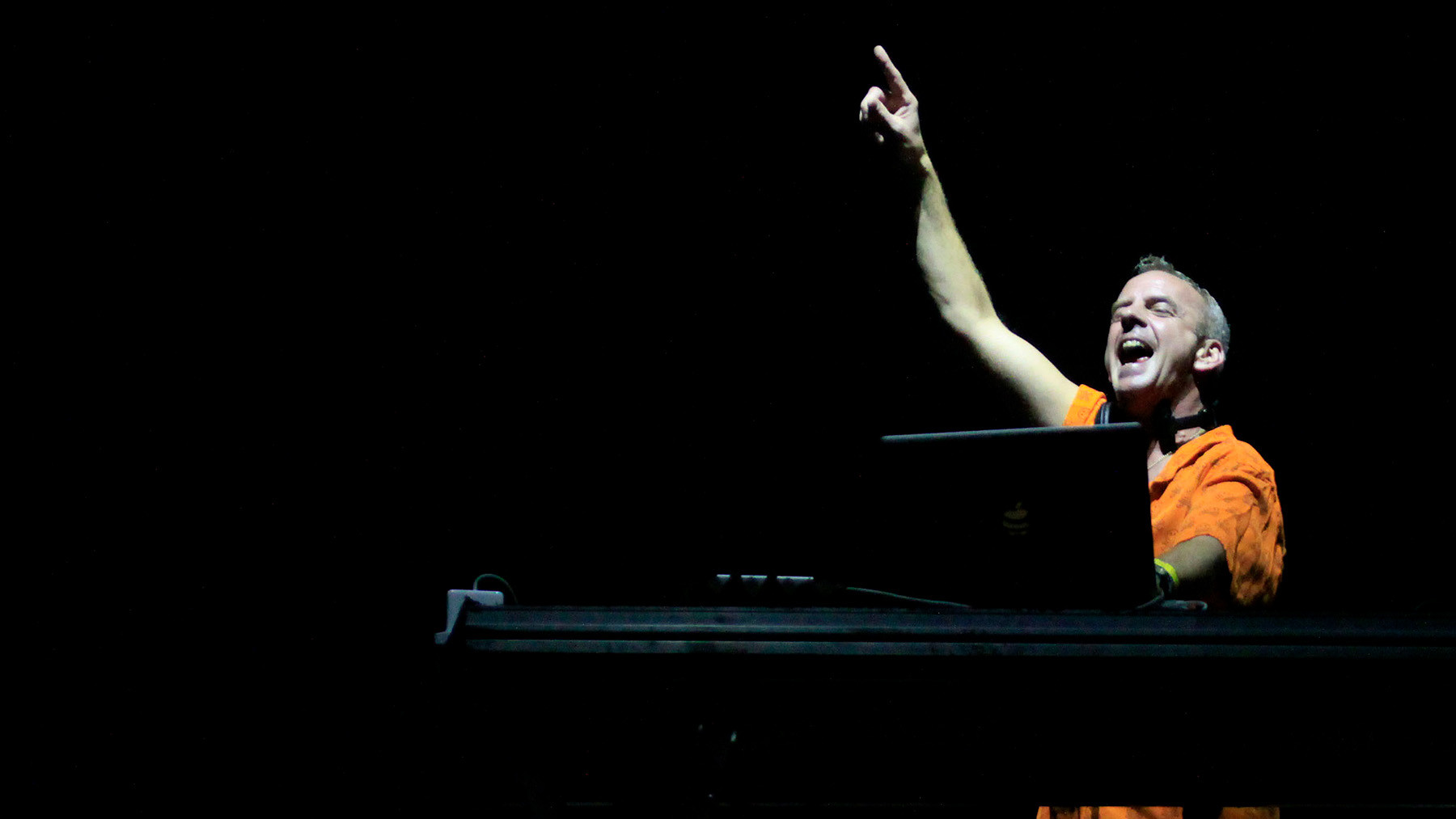 British DJ Fatboy Slim performs a concert at the Pop Music Festival, held at the parking lot of the Federation of Industries of Rio Grande do Sul, in northern Porto Alegre, southern Brazil, on March 15, 2011. Photo: WESLEY SANTOS/AE/AE (Agencia Estado via AP Images)
British DJ Fatboy Slim performs a concert at the Pop Music Festival, held at the parking lot of the Federation of Industries of Rio Grande do Sul, in northern Porto Alegre, southern Brazil, on March 15, 2011. Photo: WESLEY SANTOS/AE/AE (Agencia Estado via AP Images)
Image alt text: Fatboy Slim performing live at a music festival in Brazil, showcasing the energy of a dance music performance.
The true revolution ignited in the underground clubs of Chicago and Detroit. Disco was reborn as house music and techno, respectively, forging a new path for electronic sounds. The 90s witnessed an explosion of creativity, the rave scene unleashing a torrent of subgenres: jungle, trance, gabba, garage, each with its own distinct flavor and fervent following. This evolution continued into the 2000s, giving rise to the EDM and dubstep phenomena that dominated global airwaves and festivals.
These genres, while experiencing moments of mainstream prominence, never truly disappear. Drum and bass, for example, is currently experiencing a resurgence, proving the cyclical nature of dance music trends. Even today, house music continues to evolve, with fresh tracks emerging and captivating audiences worldwide.
Compiling a definitive list of the “best” dance music is an impossible task, akin to capturing lightning in a bottle. The sheer breadth and depth of the genre are oceanic. Instead of attempting to be exhaustive, we aim to highlight tracks that possess a timeless quality, songs that transcend fleeting trends and resonate with a universal appeal. We also acknowledge the vital intersections where dance music has cross-pollinated with other genres – synth-pop, hip-hop, funk, Miami bass, R&B, indie-rock, Latin music, and pop. This is why you’ll find artists as diverse as Prince, Robyn, Britney Spears, and Shakira sharing space with pioneers like Frankie Knuckles, Moodymann, and SOPHIE.
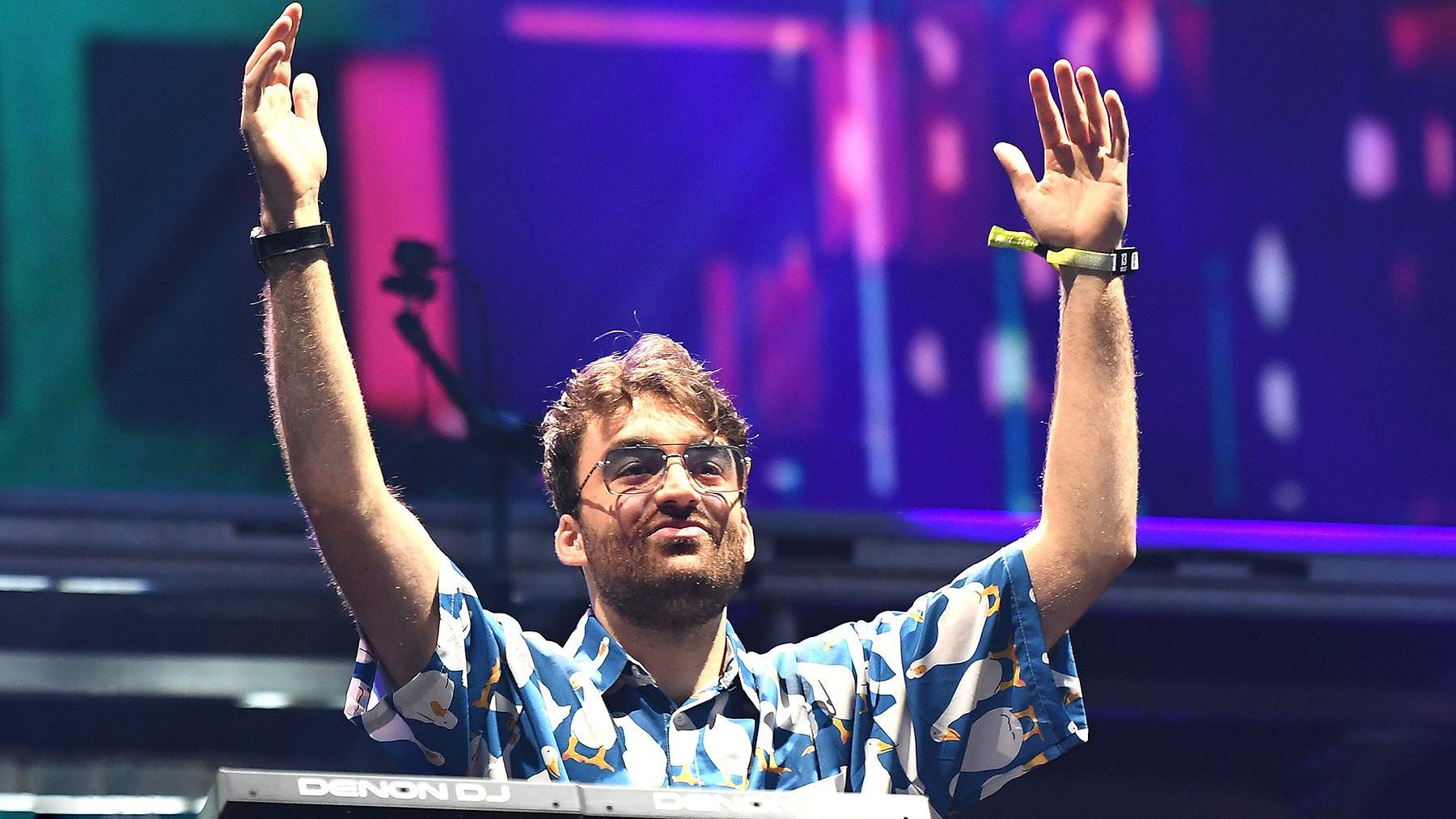 Oliver Heldens
Oliver Heldens
Image alt text: Dutch DJ Oliver Heldens, a representative of modern dance music classicism.
To understand the current landscape, where artists like Drake and Beyoncé are embracing house music, one must trace this history. This article offers one perspective, a curated journey through the sounds that have shaped dance music into the global force it is today.
Disco’s Lasting Spark: Donna Summer – ‘Last Dance’ (1979)
While the film Thank God It’s Friday might be seen as a commercialized peak for disco, it gifted us with a timeless gem: Donna Summer’s “Last Dance.” This track is a masterclass in dynamic composition. Beginning with a slow, almost ballad-like tempo, it gradually builds into a high-energy disco anthem. Bob Esty, Casablanca Records’ in-house producer, deserves immense credit for this ingenious tempo shift, a defining characteristic of the song and a testament to disco’s sophisticated structures.
Breakbeat Innovation: Fatboy Slim – ‘The Rockafeller Skank’ (1998)
Norman Cook, known as Fatboy Slim, initially described “The Rockafeller Skank” as humorous. However, its impact was undeniable. This track perfectly encapsulates Cook’s signature formula: infectious breakbeats layered with catchy guitar riffs. The surf-rock guitar and the iconic Lord Finesse vocal sample (“Right about now, the funk soul brother/Check it out now, the funk soul brother”) created an instantly recognizable and inescapable hit. While Cook jokingly referred to the “frat-boyish mentality” associated with the song, “Rockafeller Skank” became a global anthem, showcasing the power of breakbeat in dance music.
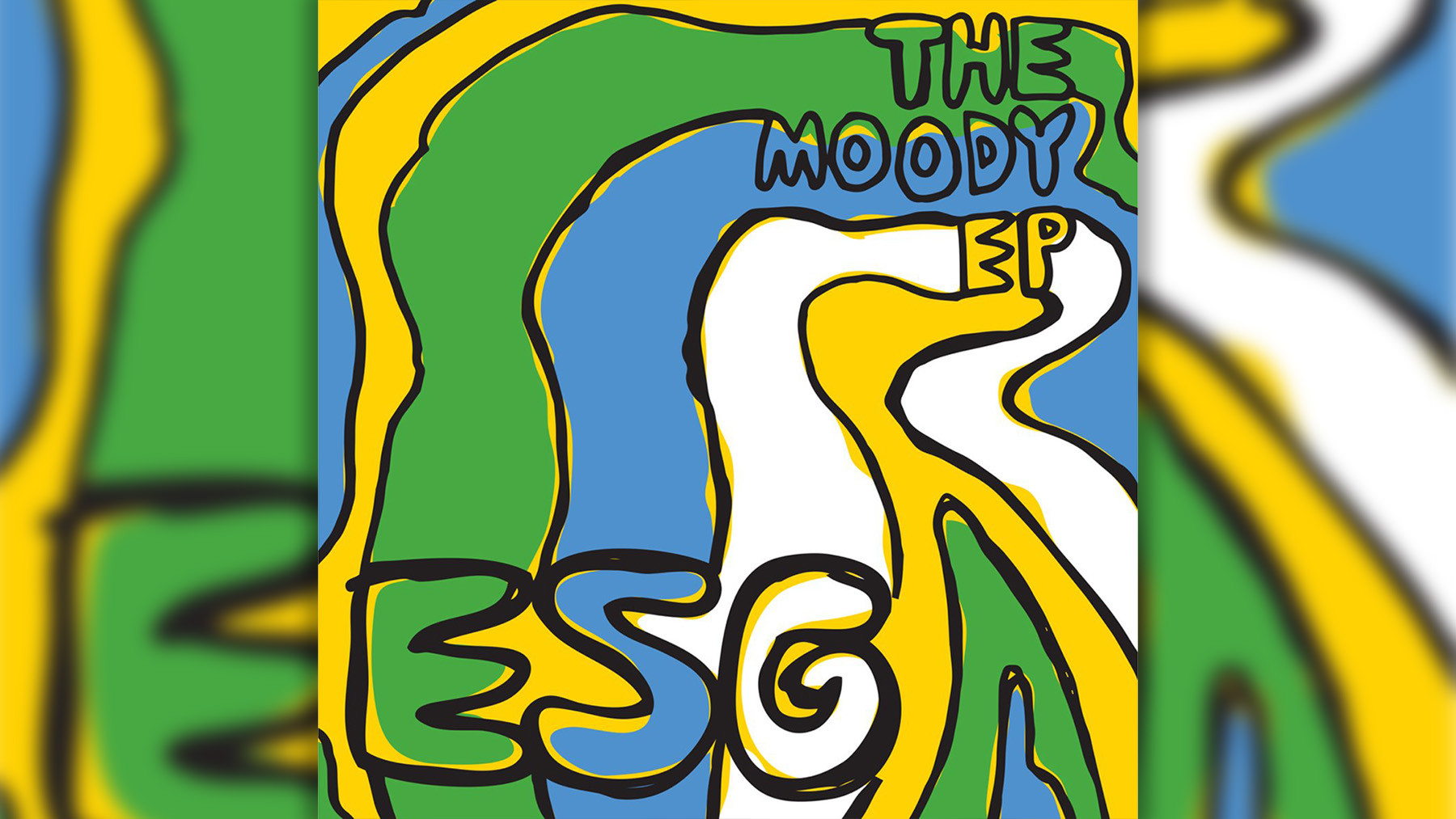 ESG Moody
ESG Moody
Image alt text: ESG performing Moody, pioneers of post-punk infused dance music from the South Bronx.
Gabber’s Raw Energy: Mescalinum United – ‘We Have Arrived’ (1991)
For those seeking the heavy metal equivalent in techno, look no further than gabber. Originating in the Netherlands, gabber is characterized by its intense, hardcore sound. Marc Acardipane, under the moniker Mescalinum United, delivered a genre-defining track with “We Have Arrived.” Built upon relentlessly crushing drums and piercing air-raid siren sounds, this track became the blueprint for gabber. At Brooklyn raves, it incited mosh pits, demonstrating the raw, physical energy of this extreme form of dance music.
Nu-Disco’s Elegance: Todd Terje – “Inspector Norse” (2012)
Todd Terje’s “Inspector Norse” is a testament to the enduring appeal of nu-disco. Created entirely with a vintage ARP synthesizer, Terje initially underestimated its potential. He envisioned it as a DJ-friendly track, but its infectious melody and amiable rhythm resonated far beyond the DJ booth. The track’s wiggly synth tune proved irresistible, demonstrating the enduring power of melody even within instrumental dance music and solidifying Terje’s position in the nu-disco scene.
Soulful House Monologue: Kerri Chandler – ‘Rain’ (1998)
Kerri Chandler, a New Jersey house producer, is revered for his deeply soulful and personal tracks. He describes himself not as a singer, but as a “vocalist” or “monologist,” channeling his life experiences into his music. “Rain” exemplifies this approach. Chandler’s heartfelt plea, punctuated by the repeated word “rain,” evokes a poignant emotional landscape. However, the music itself, particularly the playful xylophone solo, maintains a sense of lightness, creating a beautiful tension between lyrical vulnerability and musical optimism, a hallmark of soulful house.
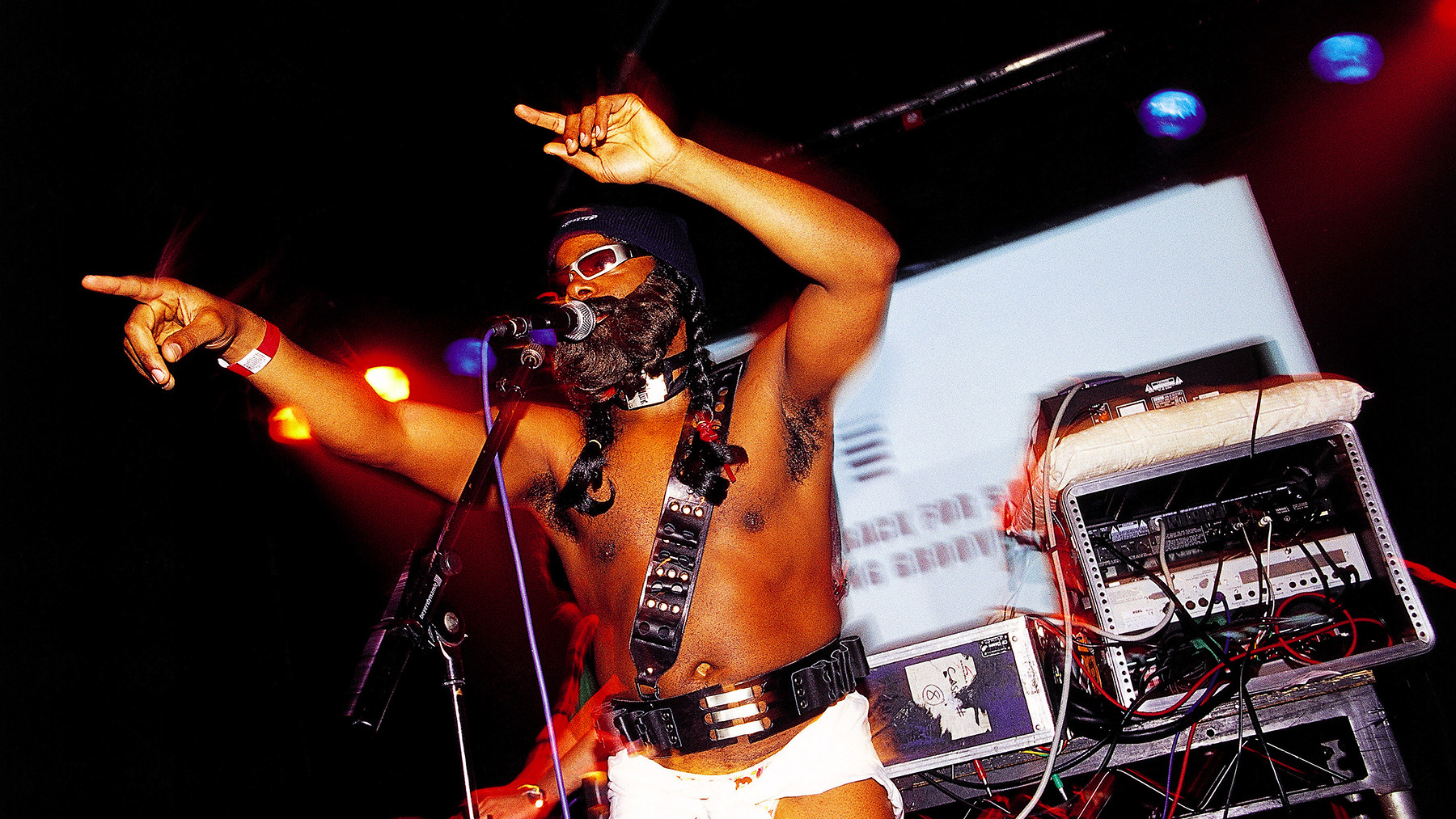 Detroit Grand Pubahs
Detroit Grand Pubahs
Image alt text: Paris the Black Fu of Detroit Grand Pubahs performing live, known for their electro renaissance sound.
Electro’s Humorous Side: Detroit Grand Pubahs – ‘Sandwiches’ (2000)
Detroit Grand Pubahs’ “Sandwiches” injects humor and absurdity into the electro genre. Born from a late-night studio improvisation, the track features bizarre, sleazy lyrics about a dance floor encounter. This track became an unexpected pop moment within Detroit’s turn-of-the-century electro renaissance. Its global club hit status proves that dance music can be both innovative and irreverently funny, pushing boundaries with both sound and lyrical content.
Controversial Vocals, Timeless Track: Black Box – ‘Everybody Everybody’ (1990)
“Everybody Everybody” by Black Box is a reminder that great music can emerge from complicated circumstances. Martha Wash’s powerful vocals, initially uncredited and mimed by a model in the music videos, became the subject of legal action. Despite the controversy, the song itself is undeniably iconic. It’s a quintessential 90s house anthem, driven by Wash’s soaring voice and a driving beat, demonstrating the crucial role of vocal performance in dance music, even when shrouded in controversy.
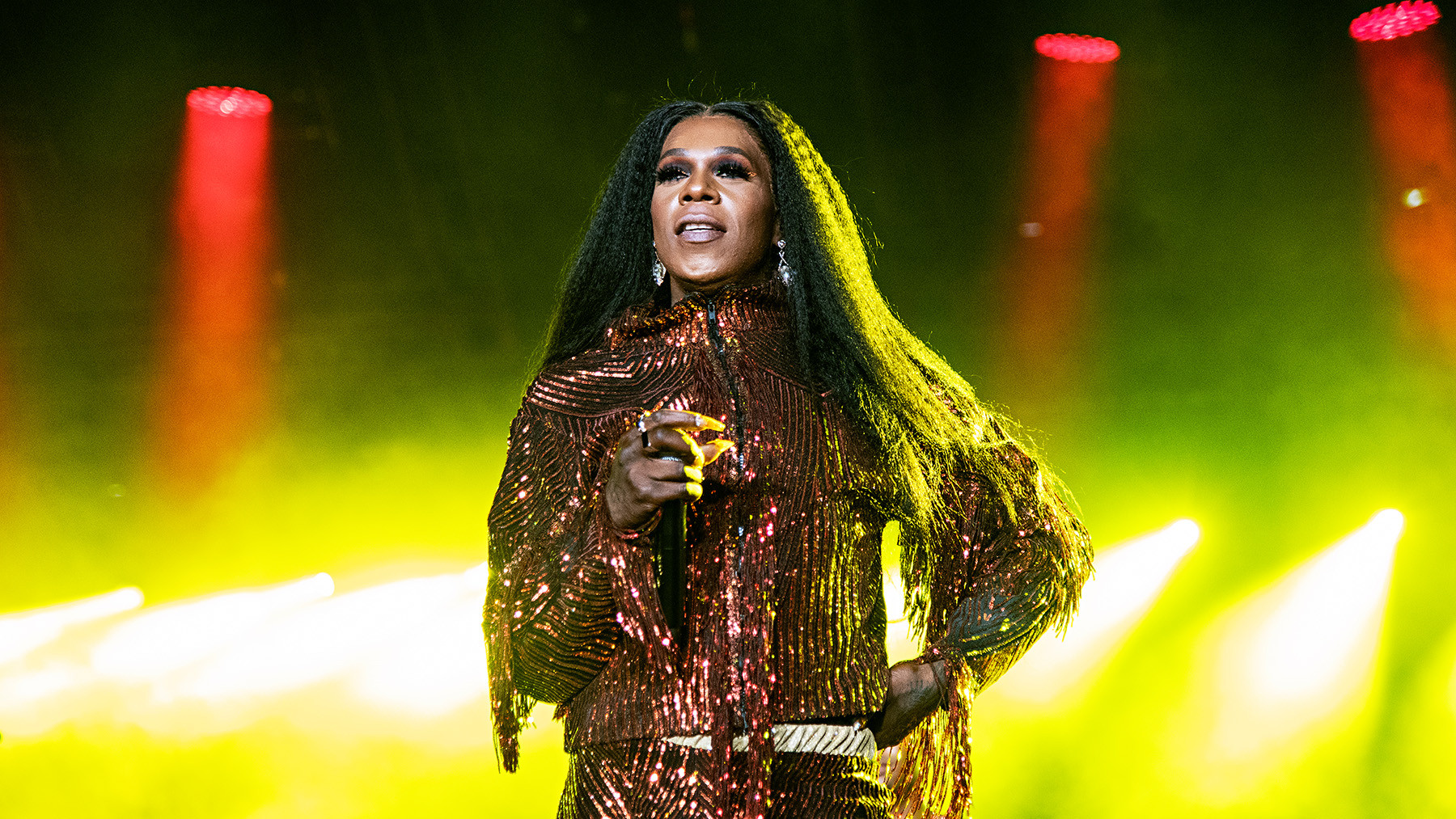 Big Freedia performs at the 2019 Essence Festival at the Mercedes-Benz Superdome, Sunday, July 7, 2019, in New Orleans. (Photo by Amy Harris/Invision/AP)
Big Freedia performs at the 2019 Essence Festival at the Mercedes-Benz Superdome, Sunday, July 7, 2019, in New Orleans. (Photo by Amy Harris/Invision/AP)
Image alt text: Big Freedia performing at the Essence Festival, spreading the energy of bounce music.
Bounce Music Breaks Through: Big Freedia – ‘Azz Everywhere’ (2010)
Big Freedia’s “Azz Everywhere” brought the infectious energy of New Orleans bounce music to a wider audience. Bounce, known for its rapid-fire rhythms, heavy bass, and call-and-response vocals, is the sound that birthed twerking. “Azz Everywhere” is a chaotic explosion of snares, samples, and chanted vocals, capturing the raw, high-energy spirit of bounce. Freedia’s work has been crucial in popularizing this regional sound, demonstrating dance music’s power to amplify diverse cultural expressions.
Dubstep’s Heart-Tugging Moment: Joy Orbison – ‘Hyph Mngo’ (2009)
In the late 2000s, dubstep was evolving, moving beyond purely aggressive sounds. Joy Orbison’s “Hyph Mngo” captured this shift. While retaining dubstep’s signature bass weight, “Hyph Mngo” incorporated smoother basslines, melodic synths, and evocative vocal samples. The result was a track that was both danceable and emotionally resonant, a rare quality in early dubstep that helped propel the genre into the mainstream.
Post-Punk Dance Fusion: ESG – ‘Moody’ (1981)
ESG, the Scroggins sisters from the South Bronx, carved a unique space in New York dance music. Their sound, while rooted in funk and disco, was stripped down, percussion-focused, and resonated with the post-punk and no-wave scenes. “Moody,” produced by Joy Division’s Martin Hannett, is a prime example of their style. Its minimalist arrangement – slinking bass, bongo drums, and Renee Scroggins’ detached vocals – created a sound that was both futuristic and raw, bridging the gap between dance music and alternative sensibilities.
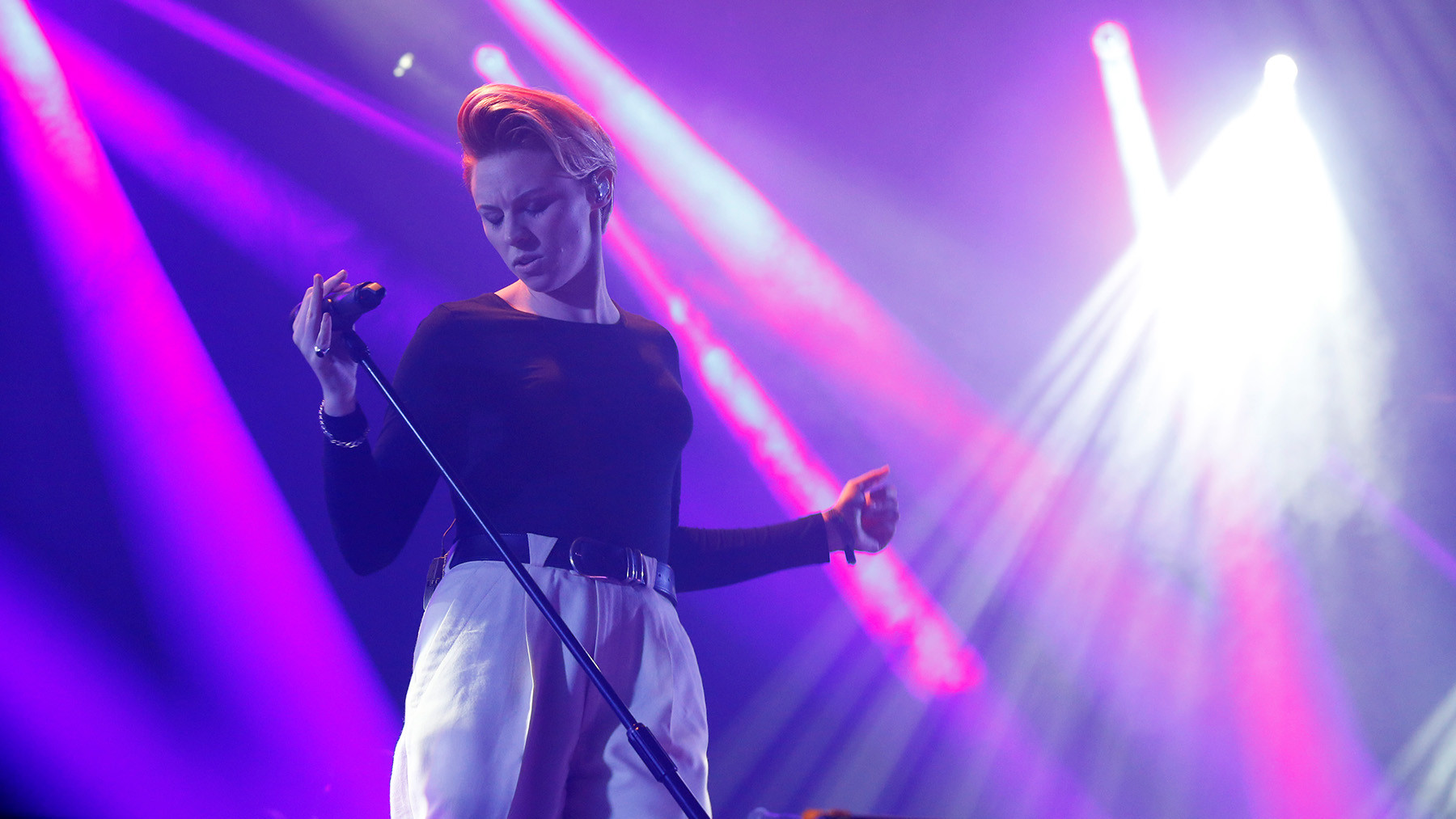 La Roux
La Roux
Image alt text: La Roux performing, whose song ‘In for the Kill’ was revitalized by Skream’s remix.
Remix as Rebirth: La Roux – ‘In for the Kill (Skream’s Let’s Get Ravey Remix)’ (2009)
Skream’s remix of La Roux’s “In for the Kill” is a powerful example of how a remix can not only transform a song but also uncover its deeper essence. Elly Jackson of La Roux felt Skream’s remix captured the song’s true meaning even better than the original. Skream stripped away the synth-pop sheen, replacing it with a tense, atmospheric build-up that explodes into drum-and-bass breaks. This remix showcased the transformative power of reinterpretation within dance music, pushing boundaries and revealing new dimensions within a song.
UK Garage Emerges: Double 99 – ‘RIP Groove’ (1997)
Double 99’s “RIP Groove” was a pivotal track in the rise of UK garage. Constructed quickly from samples, including Armand Van Helden and Kenny Dope, “RIP Groove” became an instant anthem. It propelled UK garage, then known as “speed garage,” into the pop charts, announcing a fresh, distinctly British sound to the world. This track demonstrates the genre-defining power of sampling and the rapid evolution within dance music scenes.
Europop Blueprint: Snap! – ‘The Power’ (1990)
Snap!’s “The Power” is a quintessential example of early 90s Europop and a blueprint for countless tracks that followed. German producers sampled American rapper Chill Rob G and vocalist Jocelyn Brown, creating a club hit that was then re-recorded with Turbo B. This complex origin story highlights the global and collaborative nature of dance music production. “The Power”’s rap-verse-chorus structure became a template for Europop, demonstrating its lasting influence on pop-dance crossover.
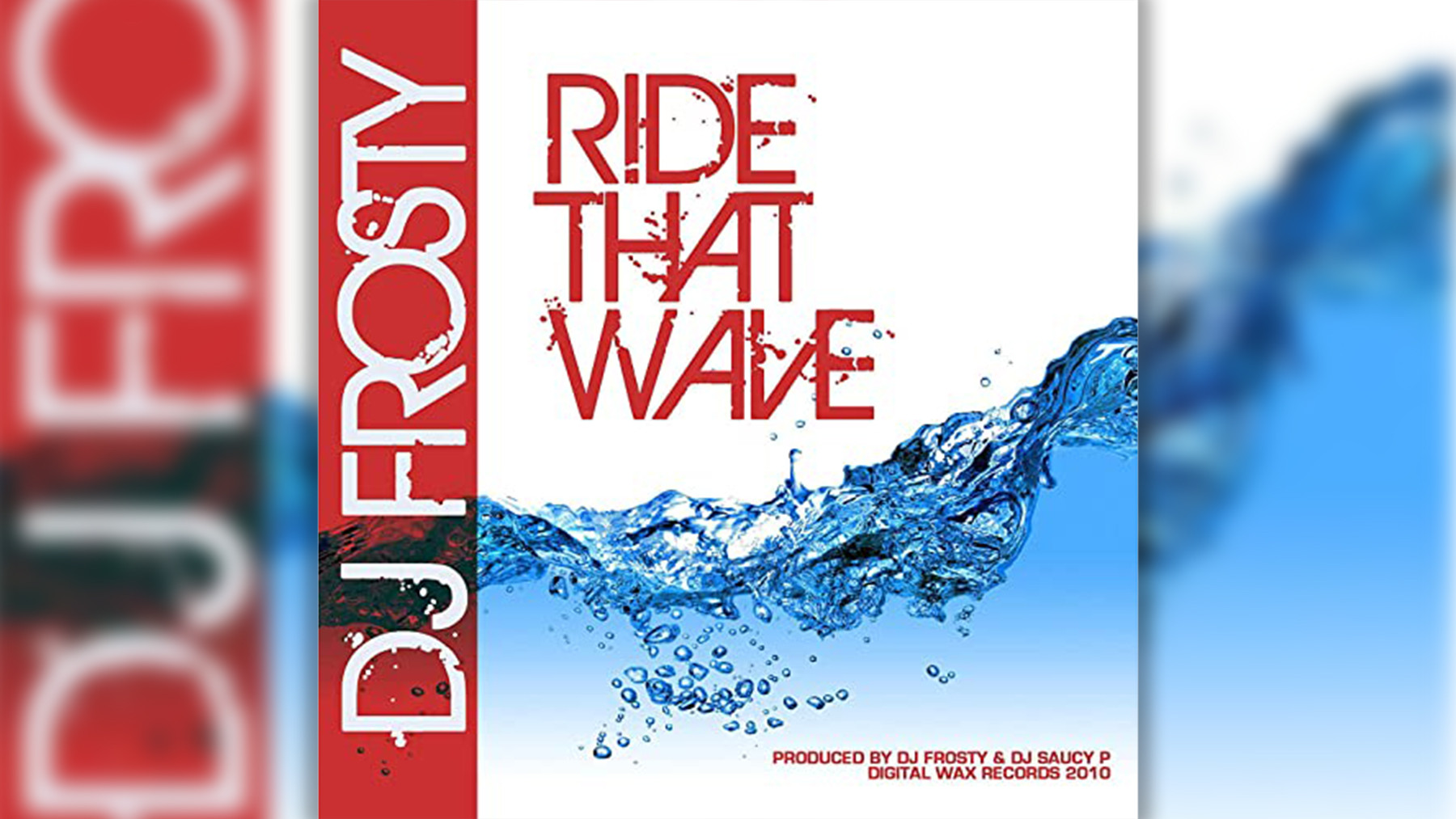 DJ Frosty
DJ Frosty
Image alt text: DJ Frosty, representing the syncopated rhythms of Jersey club music.
Jersey Club’s Global Reach: DJ Frosty feat. Fatman Scoop, DJ Webstar, Young B. & Smooth – ‘Ride That Wave (Remix)’ (2010)
DJ Frosty’s “Ride That Wave” showcases the infectious energy of Jersey club. Originating in Newark, New Jersey, Jersey club is characterized by its syncopated rhythms, clipped vocal samples, and a raw, energetic feel. “Ride That Wave” became a chant-along hit, perfectly embodying the genre’s sound as it began to gain international recognition. Its influence can be traced to mainstream artists like Drake, demonstrating the organic spread of regional dance music styles into the global scene.
Dance Punk’s Arrival: The Rapture – ‘House of Jealous Lovers’ (2002)
The Rapture’s “House of Jealous Lovers” was a seismic moment in early 2000s dance-punk. James Murphy of DFA Records described the initial reaction to its fusion of rock and dance as “sacrilegious.” The track combined Gang of Four-esque guitar riffs with a driving dance beat and shout-along vocals. It bridged the gap between indie rock and dance music, igniting the New York dance-punk scene and influencing a wave of bands to incorporate danceable rhythms into rock music.
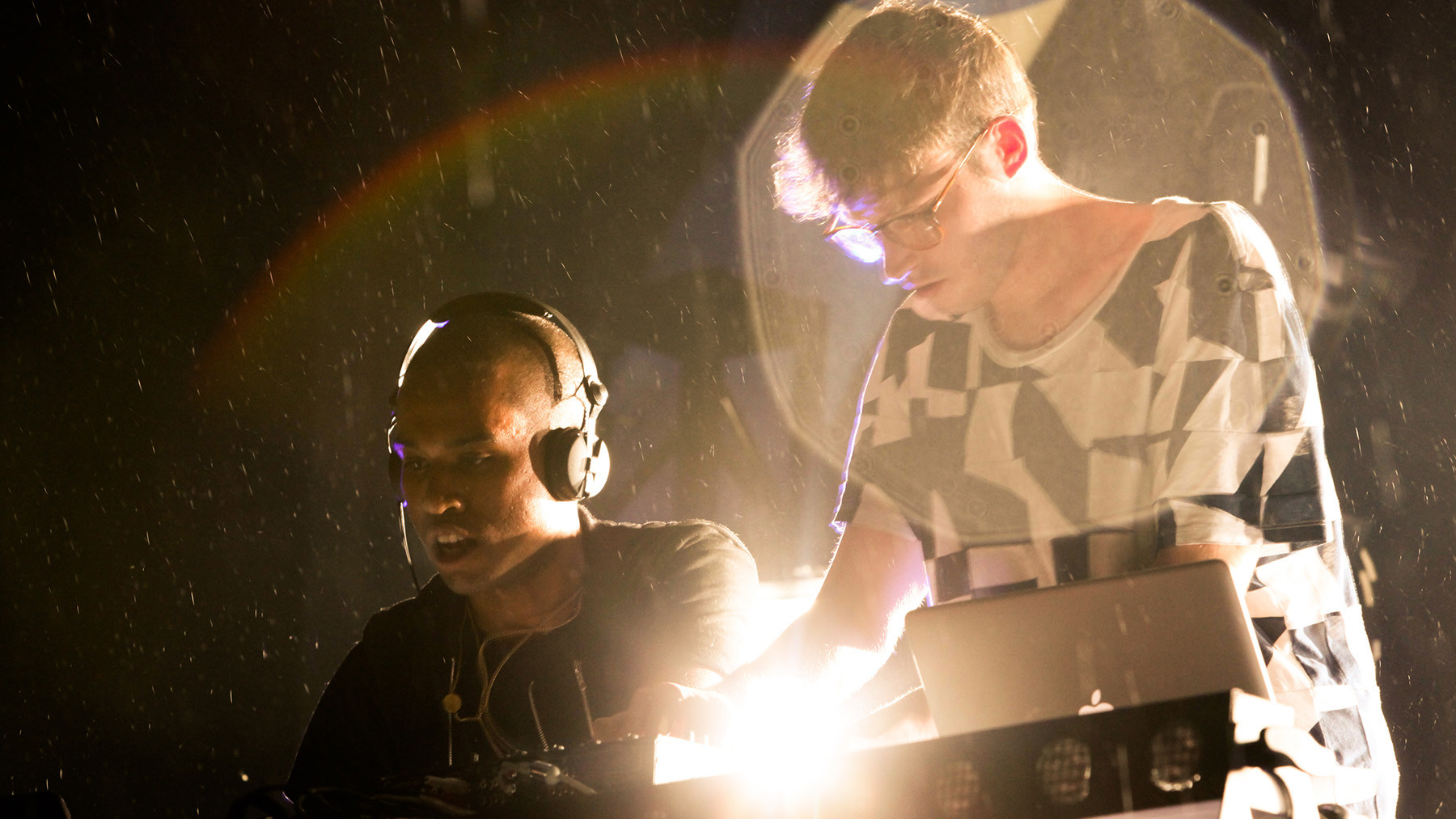 TNGHT
TNGHT
Image alt text: TNGHT performing, known for their influential trap-infused EDM sound.
Trap’s EDM Crossover: TNGHT – ‘Higher Ground’ (2012)
TNGHT’s “Higher Ground,” a collaboration between Hudson Mohawke and Lunice, was instrumental in bringing trap into the EDM mainstream. Part of a concise five-song EP, “Higher Ground” is characterized by its heavy, stomping beat and cavernous sound design. Its blend of trap sensibilities with EDM production techniques resonated widely, leading to collaborations with major artists like Kanye West and solidifying trap’s influence on contemporary dance music.
Drum and Bass with Jazz Roots: Roni Size and Reprazent – ‘Brown Paper Bag’ (1997)
Roni Size and Reprazent’s “Brown Paper Bag” showcased a sophisticated evolution within drum and bass. At a time when the genre was becoming increasingly fragmented, Reprazent fused the breakneck rhythms of drum and bass with warm, organic jazz-funk elements. “Brown Paper Bag,” with its prominent double bass, became their signature track. It demonstrated that drum and bass could be both experimental and deeply rooted in its Black musical heritage, appealing to a diverse audience.
Soulful Sound System to Chart-Toppers: Soul II Soul – ‘Back to Life (However Do You Want Me)’ (1989)
Soul II Soul, originating as a London sound system, seamlessly blended reggae and soul into their productions. “Back to Life” became their breakthrough hit. Initially intended for their sound system parties, the track’s smooth grooves and Caron Wheeler’s captivating vocals resonated far beyond. It topped the Billboard R&B chart and crossed over to the Hot 100, demonstrating the crossover potential of soulful, groove-based dance music.
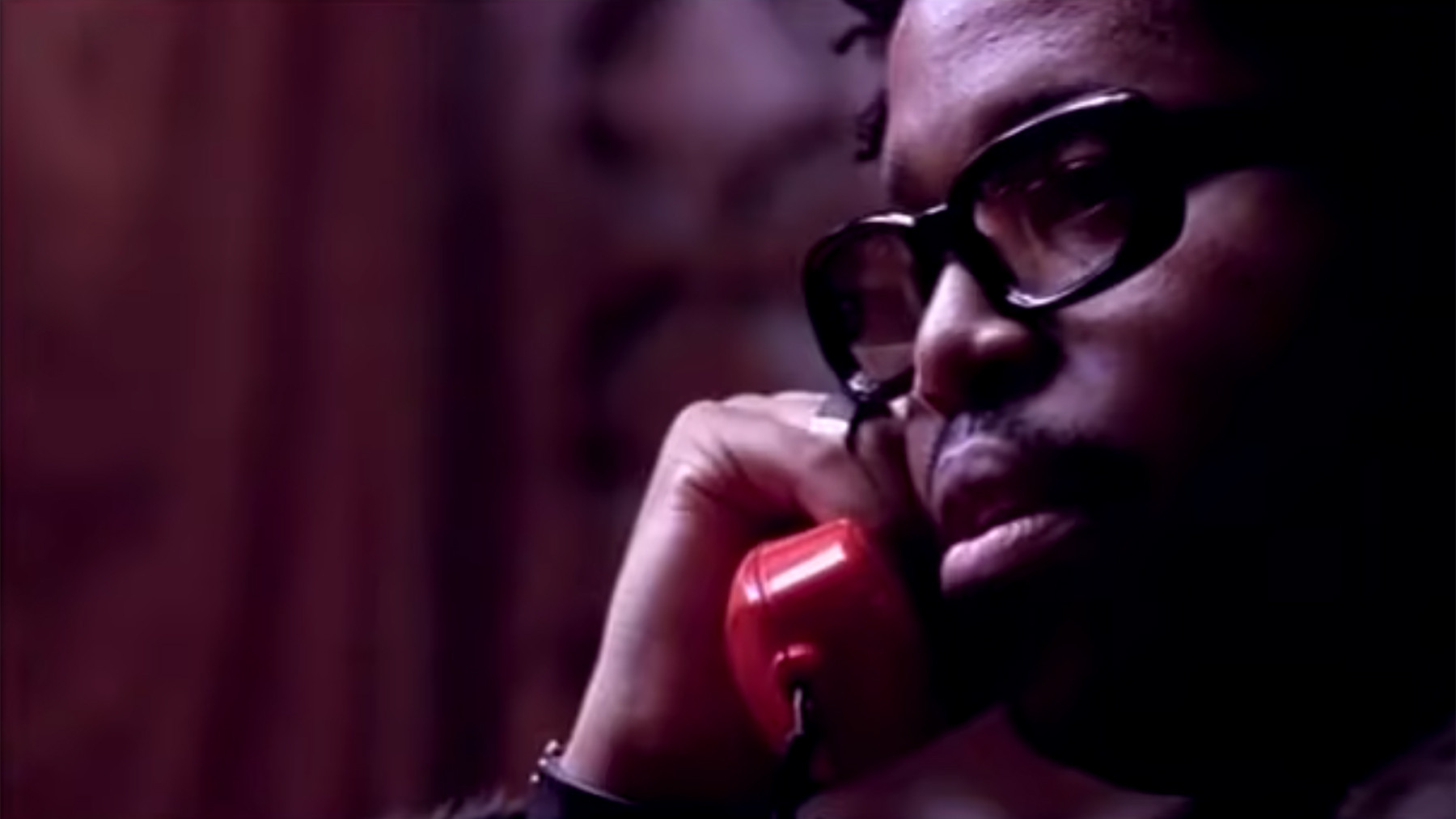 Felix Da Housecat
Felix Da Housecat
Image alt text: Felix da Housecat, a Chicago house legend who went global with electroclash.
Electroclash Anthem: Felix da Housecat – ‘Silver Screen Shower Scene’ (2001)
Felix da Housecat’s “Silver Screen Shower Scene” is considered an anthem of the electroclash era. Felix, a Chicago house veteran, collaborated with international artists for his Kittenz and Thee Glitz album, exploring themes of celebrity and artifice. “Silver Screen Shower Scene,” with its celebrity-tweaking lyrics and driving electro beat, perfectly captured the sound and attitude of electroclash. The Jacques Lu Cont remix further amplified its club appeal, solidifying its place as a genre-defining track.
Dreamy Remix Magic: Dntel feat. Ben Gibbard – ‘(This Is) The Dream of Evan and Chan (Superpitcher Kompakt Remix)’ (2001)
The Superpitcher remix of Dntel’s “(This Is) The Dream of Evan and Chan” elevates the original into a dreamlike state. Ben Gibbard of Death Cab for Cutie wrote the lyrics based on a bizarre dream, and Dntel’s production set a fittingly ethereal tone. However, Superpitcher’s remix, with its foggy synths and ricocheting bells, truly captured the essence of a dream. This remix showcases the power of interpretation in dance music, transforming a song into a truly immersive sonic experience.
Hi-NRG Pioneer: Patrick Cowley feat. Sylvester – ‘Do Ya Wanna Funk?’ (1982)
Patrick Cowley, a synth wizard, was a key innovator of Hi-NRG, a high-energy, synth-driven genre prominent in gay clubs. “Do Ya Wanna Funk?” featuring Sylvester, is a landmark track of this genre. Despite battling illness in his final months, Cowley created a track filled with pealing synth riffs and Sylvester’s stratospheric falsetto. “Do Ya Wanna Funk?” remains a Hi-NRG classic and its inclusion in the film Trading Places further cemented its iconic status.
![]() Funkadelic
Funkadelic
Image alt text: Funkadelic performing ‘One Nation Under a Groove’, a banjo-led funk masterpiece.
Banjo-Led Funk Masterpiece: Funkadelic – ‘One Nation Under a Groove’ (1978)
Funkadelic’s “One Nation Under a Groove” is a testament to George Clinton’s genre-bending genius. Famously led by a banjo, this track became a funk anthem, topping the R&B charts for six weeks. Clinton’s decision to assign the song to the guitar-heavy Funkadelic, rather than the horn-driven Parliament, gave it a raw, powerful energy. “One Nation Under a Groove” transcends genre boundaries, proving that funk can be both musically innovative and immensely popular.
Hi-NRG Defined: Evelyn Thomas – ‘High Energy’ (1984)
Evelyn Thomas’ “High Energy” literally gave the Hi-NRG genre its name. Produced by Ian Levine, who drew inspiration from Northern Soul and early disco, “High Energy” is brash, cheerful, and undeniably catchy. It became a British Top Five hit and remains a Hi-NRG staple. The track’s success demonstrates the fusion of diverse influences within dance music and the enduring appeal of high-energy, synth-driven sounds.
Disco’s Modern Revival: Daft Punk feat. Pharrell Williams and Nile Rodgers – ‘Get Lucky’ (2013)
Daft Punk’s “Get Lucky,” featuring Pharrell Williams and Nile Rodgers, marked a resurgence of disco influences in contemporary dance music. Williams aimed to channel Nile Rodgers’ signature guitar style, and the collaboration resulted in a track that was both retro and modern. “Get Lucky” became a global phenomenon, proving the timeless appeal of disco grooves and the power of collaboration between generations of music icons.
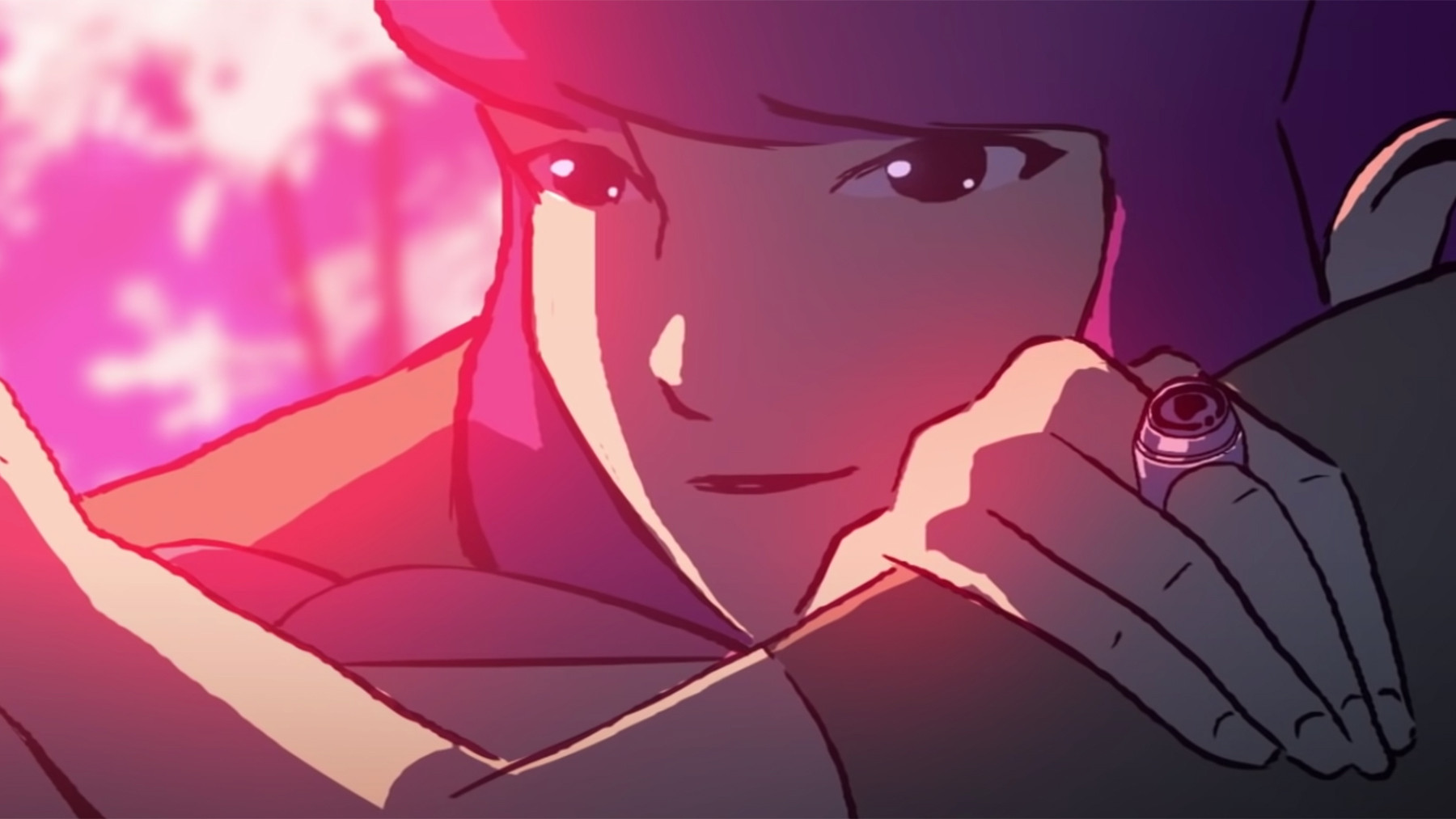 Porter Robinson – Matt Zo – Easy
Porter Robinson – Matt Zo – Easy
Image alt text: Porter Robinson and Mat Zo, creators of ‘Easy’, an homage to Daft Punk’s Discovery.
Daft Punk Homage: Mat Zo and Porter Robinson – ‘Easy’ (2013)
Mat Zo and Porter Robinson’s “Easy” is a self-proclaimed homage to Daft Punk’s Discovery album. It takes the disco chords of French touch and infuses them with a more trance-inspired energy. “Easy” is both a modern update and a classicist piece, evoking both vintage synths and contemporary EDM sensibilities. Its success demonstrates the cyclical nature of musical inspiration and the enduring influence of Daft Punk on subsequent generations of dance music producers.
Bridging Electroclash and EDM: Justice vs. Simian – “We Are Your Friends” (2006)
Justice’s remix of Simian’s “Never Be Alone,” retitled “We Are Your Friends,” became a defining track of the mid-2000s. Created with limited sampling technology, the remix transformed Simian’s rock track into a jagged, electro-house anthem. “We Are Your Friends” bridged the gap between electroclash and the burgeoning EDM scene, launching Justice’s career and prompting Simian to reinvent themselves as Simian Mobile Disco.
EDM’s Youth Movement: Martin Garrix – ‘Animals’ (2013)
Martin Garrix’s “Animals” epitomized the youth-driven energy of the early 2010s EDM boom. Produced when Garrix was only 18, “Animals” is built around a catchy, wordless synth riff that became instantly recognizable. Its global success highlighted the accessibility and youthful appeal of EDM, while also challenging industry assumptions about young producers.
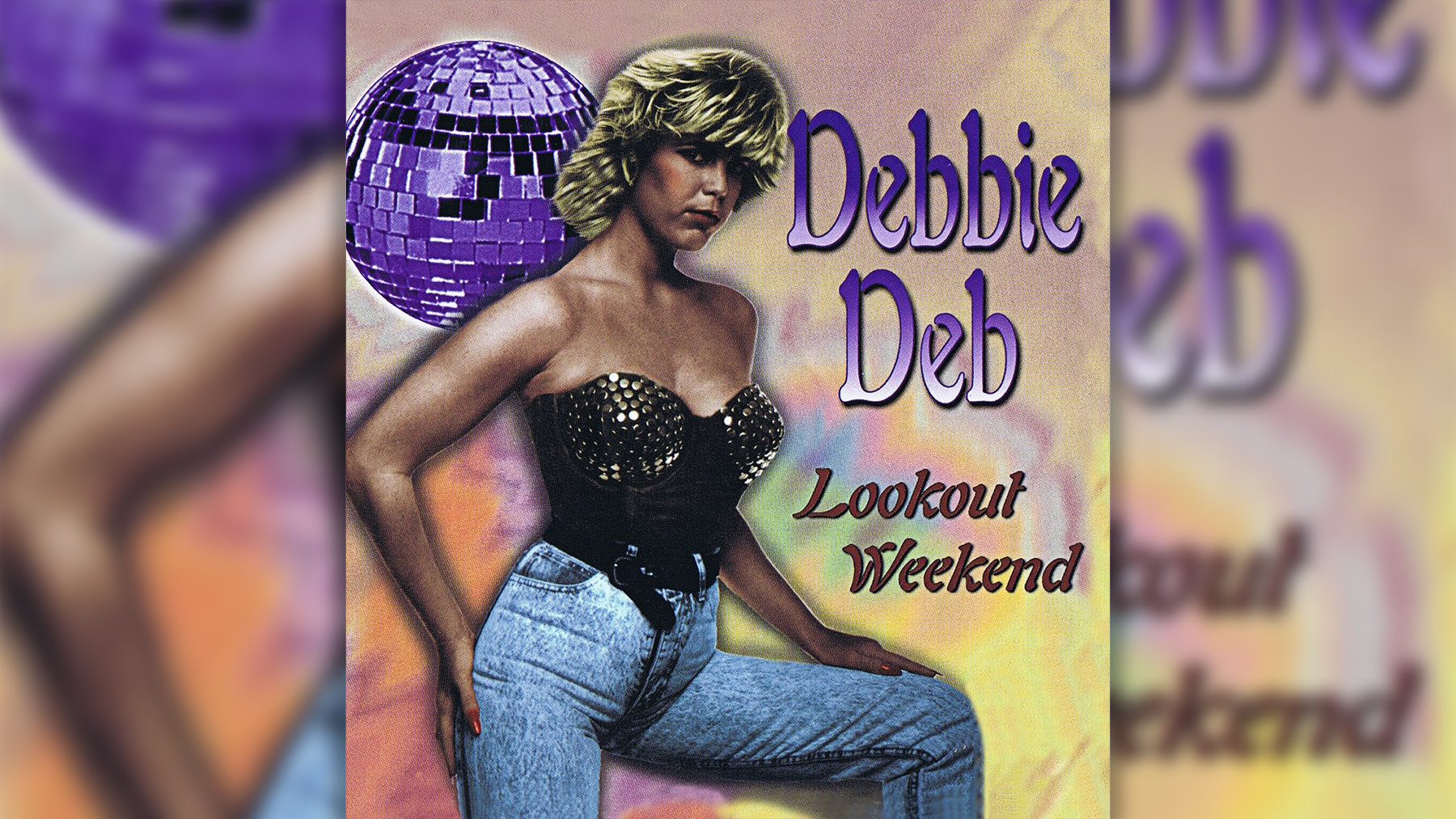 Debbie Deb
Debbie Deb
Image alt text: Debbie Deb, a pioneer of freestyle music with ‘Lookout Weekend’.
Freestyle’s Frothy Zenith: Debbie Deb – ‘Lookout Weekend’ (1984)
Debbie Deb’s “Lookout Weekend” is considered freestyle music at its peak. Miami production pioneer Pretty Tony coined the term “freestyle” and created Debbie Deb’s signature sound: airy, hyper-melodic tracks bridging the sounds of KC and the Sunshine Band and 2 Live Crew. “Lookout Weekend,” like its predecessor “When I Hear Music,” achieved triple platinum status, solidifying freestyle’s place in dance music history and Debbie Deb’s status as a genre icon.
Baltimore Club’s Tribute: Tate Kobang – ‘Bank Rolls (Remix)’ (2015)
Tate Kobang’s “Bank Rolls (Remix)” is a modern tribute to Baltimore club music. Sampling Tim Trees’ “Bank Roll,” Kobang’s remix celebrates the energy and resilience of Baltimore. He even shouts out K-Swift, a legendary Baltimore club DJ, in the lyrics, further cementing the track’s connection to the city’s musical heritage. “Bank Rolls (Remix)” introduced a new audience to the underground Baltimore sound, demonstrating the enduring power of regional dance music styles.
New Wave Disco Medley: Soft Cell – ‘Tainted Love/Where Did Our Love Go?’ (1981)
Soft Cell’s “Tainted Love/Where Did Our Love Go?” medley is a New Wave disco masterpiece. Combining their synth-pop version of “Tainted Love” with The Supremes’ classic “Where Did Our Love Go?”, Soft Cell created a nine-minute medley that has captivated dance floors for decades. It’s a perfect example of New Wave’s fusion of synth-pop, disco, and classic pop influences, creating a sound that is both nostalgic and futuristic.
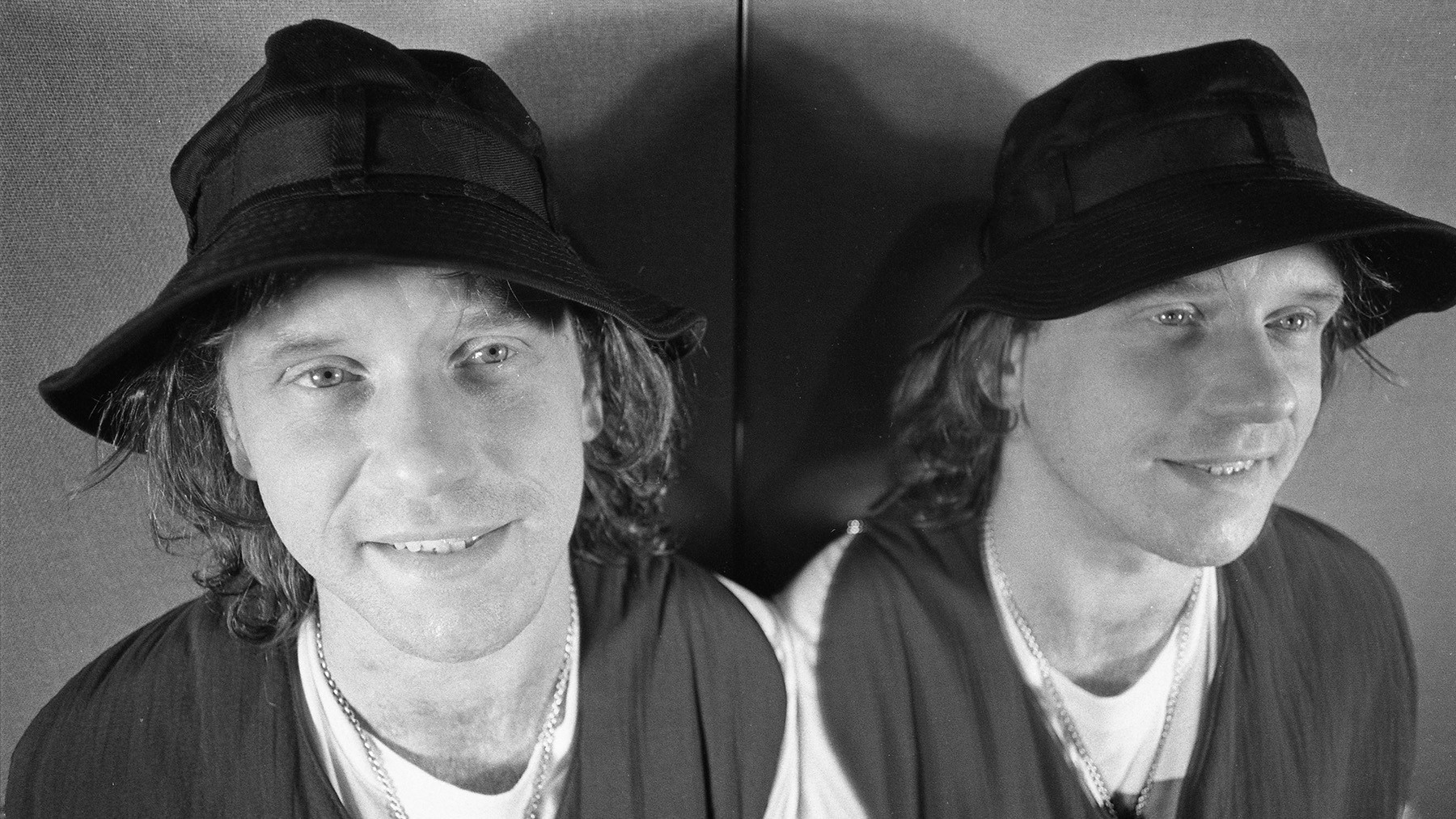 The Orb
The Orb
Image alt text: Alex Paterson of The Orb, innovator of ambient house with ‘Little Fluffy Clouds’.
Ambient House’s Cuddliest Record: The Orb – ‘Little Fluffy Clouds’ (1990)
The Orb’s “Little Fluffy Clouds” is a landmark track in ambient house. Alex Paterson combined a Rickie Lee Jones interview about Arizona skies with Steve Reich’s Electric Counterpoint to create a uniquely atmospheric and calming track. “Little Fluffy Clouds” became an unlikely hit of the acid house era, demonstrating the genre’s ability to create danceable music that is also introspective and beautiful.
Rave Bangers from Aphex Twin: Polygon Window – ‘Quoth’ (1993)
Polygon Window’s “Quoth,” from Richard D. James (Aphex Twin), showcases a different side of the experimental electronic artist. Released under the Polygon Window moniker, “Quoth” is a high-energy rave banger. Its complex percussion and driving rhythm made it a favorite in the early 90s rave scene, demonstrating Aphex Twin’s versatility and ability to create both challenging and danceable music.
Dubstep’s Breakthrough Moment: Skream – ‘Midnight Request Line’ (2005)
Skream’s “Midnight Request Line” was a breakthrough track for both the producer and the dubstep genre. Its playful, brooding sound, characterized by a fluttering synth line and heavy beat, resonated widely. “Midnight Request Line” catapulted Skream into the limelight and helped solidify dubstep as a major force in electronic music.
Image alt text: Paul Johnson, a ghetto house pioneer known for ‘Feel My M.F. Bass’.
Ghetto House at its Rawest: Paul Johnson – ‘Feel My M.F. Bass’ (1994)
Paul Johnson’s “Feel My M.F. Bass” is a raw and unapologetic example of ghetto house. Part of Chicago’s Dance Mania label scene, ghetto house is characterized by its rough, sample-based, street-oriented sound. “Feel My M.F. Bass” is a blunt-force object, driven by a cavernous kick drum and Johnson’s gleefully provocative vocal sample. It represents the raw, unfiltered energy of ghetto house and Johnson’s unique, impactful style.
Soulful Chicago House Liberation: Ten City – ‘That’s the Way Love Is’ (1989)
Ten City’s “That’s the Way Love Is” epitomized the soulful and song-oriented side of Chicago house. Produced by Marshall Jefferson, Ten City blended Philly soul strings with lush love songs and Byron Stingily’s soaring falsetto. “That’s the Way Love Is” achieved both commercial success and cultural impact, becoming an anthem of liberation for some in South Africa, demonstrating the global reach and emotional power of house music.
Industrial Dance Crossover: Nitzer Ebb – ‘Join in the Chant’ (1987)
Nitzer Ebb’s “Join in the Chant” is a perfect example of industrial dance crossover. Hailing from England’s industrial Midlands, Nitzer Ebb fused industrial sounds with danceable grooves. “Join in the Chant” became their rousing anthem, embraced by both industrial and techno scenes. Its driving rhythm and chant-like vocals made it a crossover hit, demonstrating the unexpected danceability within industrial music.
 Bronski Beat
Bronski Beat
Image alt text: Bronski Beat, known for the poignant gay club anthem ‘Smalltown Boy’.
Gay Club Anthem of Alienation: Bronski Beat – ‘Smalltown Boy’ (1984)
Bronski Beat’s “Smalltown Boy” is a poignant and powerful gay club anthem. Jimi Somerville’s vocals, trained by singing along to disco records, poured angst and alienation into this track about escaping small-town prejudice. “Smalltown Boy,” with its keening vocal hook and synth-driven melody, became an instant anthem of escape and self-acceptance, resonating deeply within the LGBTQ+ community and beyond.
Bleep Techno Bass Weight: LFO – ‘LFO (Leeds Warehouse Mix)’ (1990)
LFO’s self-titled track, particularly the “Leeds Warehouse Mix,” defined the Sheffield “bleep” techno sound. While characterized by icy synth chords and squiggly “bleeps,” the track was ultimately about bass weight. The bass line in “LFO” is designed to move bodies, while the sub-bass can shake foundations. It became a signature track for Warp Records and a testament to the power of low-end frequencies in dance music.
Drake’s Dance Music Foray: Drake – ‘Sticky’ (2022)
Drake’s “Sticky” represents a contemporary megastar’s foray into dance music. From his album Honestly, Nevermind, “Sticky” draws on Jersey and Baltimore club influences and deep house strains. Produced by Gordo and Ry X, “Sticky” sees Drake rapping about personal topics over a club-ready beat. It’s an example of a mainstream artist engaging with underground dance music subcultures, resulting in a fresh and unexpected sound.
Image alt text: Roland Clark, house music vocalist and creator of ‘I Get Deep’.
House Music Rapture: Roland Clark – ‘I Get Deep (Shelter Mix)’ (2000)
Roland Clark’s “I Get Deep (Shelter Mix)” captures the rapturous experience of a deep house dance floor. Inspired by Club Zanzibar in Newark, Clark’s monologue-like vocals describe the immersive feeling of being lost in the music. “I Get Deep” became an anthem for house music lovers, celebrating the transformative power of the dance floor experience. Its a cappella version was famously sampled by Fatboy Slim, further extending its reach and impact.
Lo-Fi Gospel House Uplift: Aly-Us – ‘Follow Me’ (1992)
Aly-Us’s “Follow Me” exemplifies the raw, soulful energy of early house music. Recorded in a basement on a four-track, its lo-fi production and slightly pitchy vocals only enhance its charm and urgency. “Follow Me” is a gospel-inspired house anthem with an uplifting message of unity and peace. Its raw, handmade quality is a reminder of house music’s DIY origins and its deeply emotional core.
First Disco Hits: George McCrae – ‘Rock Your Baby’ (1974)
George McCrae’s “Rock Your Baby” is considered one of the first true disco hits. Reaching Number One on the Billboard Hot 100 in the summer of 1974, along with Hues Corporation’s “Rock the Boat,” it signaled the arrival of disco into the mainstream. The track’s smooth, glistening production, created by future KC and the Sunshine Band members, laid the groundwork for the disco era and McCrae’s accidental hit became a defining sound of the early 70s.
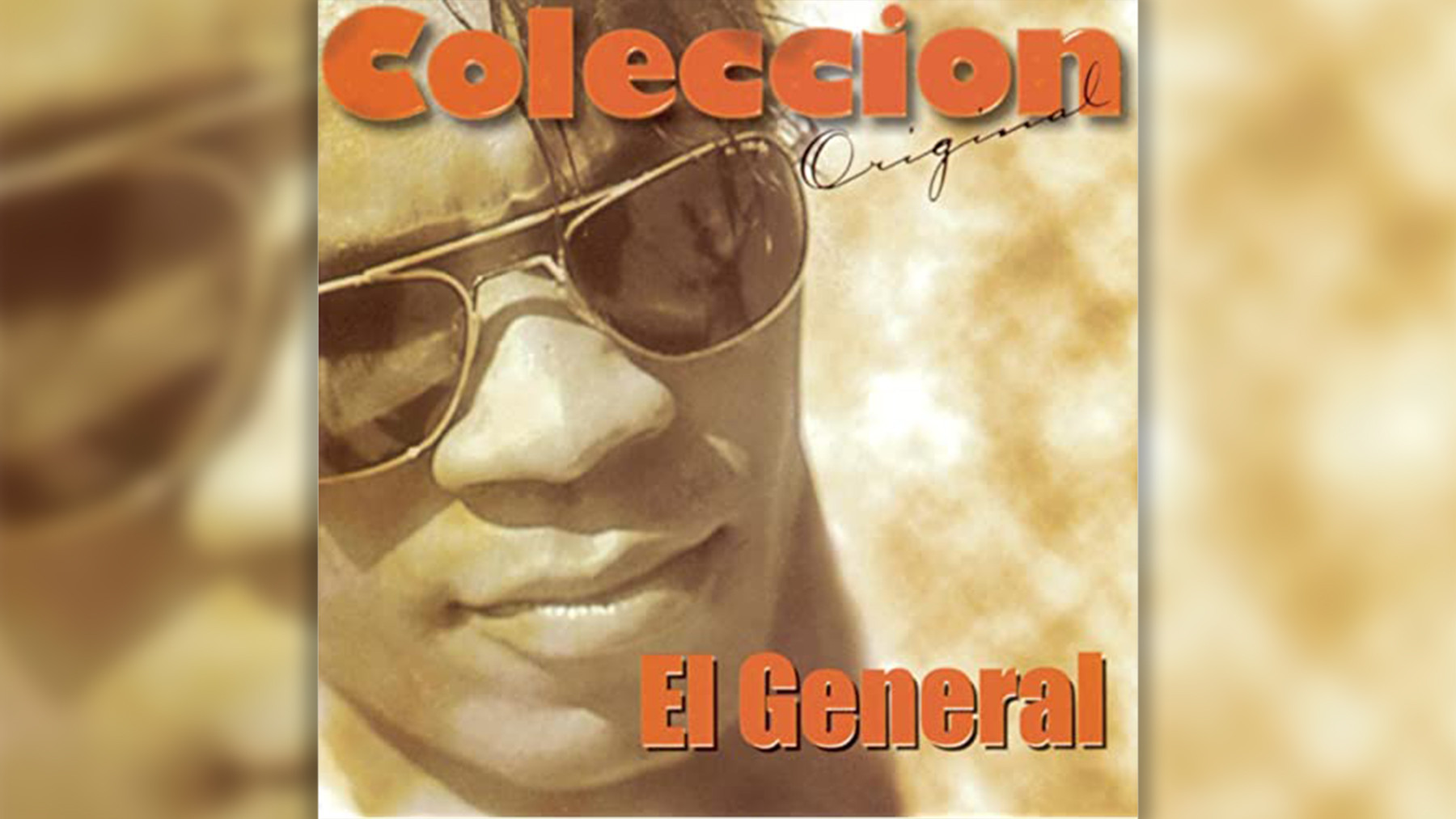 El General
El General
Image alt text: El General, Panamanian pioneer of reggaeton and experimental dance sounds.
Reggaeton Blueprint and Club Innovation: El General – ‘Perezosa’ (1995)
El General, a Panamanian pioneer, is credited with setting the blueprint for reggaeton. He blended reggae riddims with electronic sounds, creating international hits in the 80s and 90s. “Perezosa” from his Club 555 album, showcases his experimental approach. It’s a booming, empowered dance anthem packed with high-voltage electronic sounds, demonstrating El General’s broader influence on club music beyond reggaeton.
Jungle’s Playful Groove: Tom and Jerry – ‘Maximum Style’ (1994)
Tom and Jerry, an alias of drum and bass pioneers 4Hero, created the jungle gem “Maximum Style.” Released as jungle’s popularity surged in the UK, “Maximum Style” is characterized by its easy-gliding rhythm, needling guitar melody, and playful cartoon sound effects. It balanced playfulness with a serious groove, showcasing the dynamic range within early jungle music.
Dance-Punk Irony and FOMO: LCD Soundsystem – ‘Losing My Edge’ (2002)
LCD Soundsystem’s debut single “Losing My Edge” is both a killer dance track and a brilliant piece of social commentary. James Murphy’s wry lyrics portray an aging hipster grappling with fading relevance. The track’s blend of irony, danceable beats, and relatable FOMO resonated deeply, igniting the New York dance-punk scene and establishing LCD Soundsystem as a major force in contemporary music.
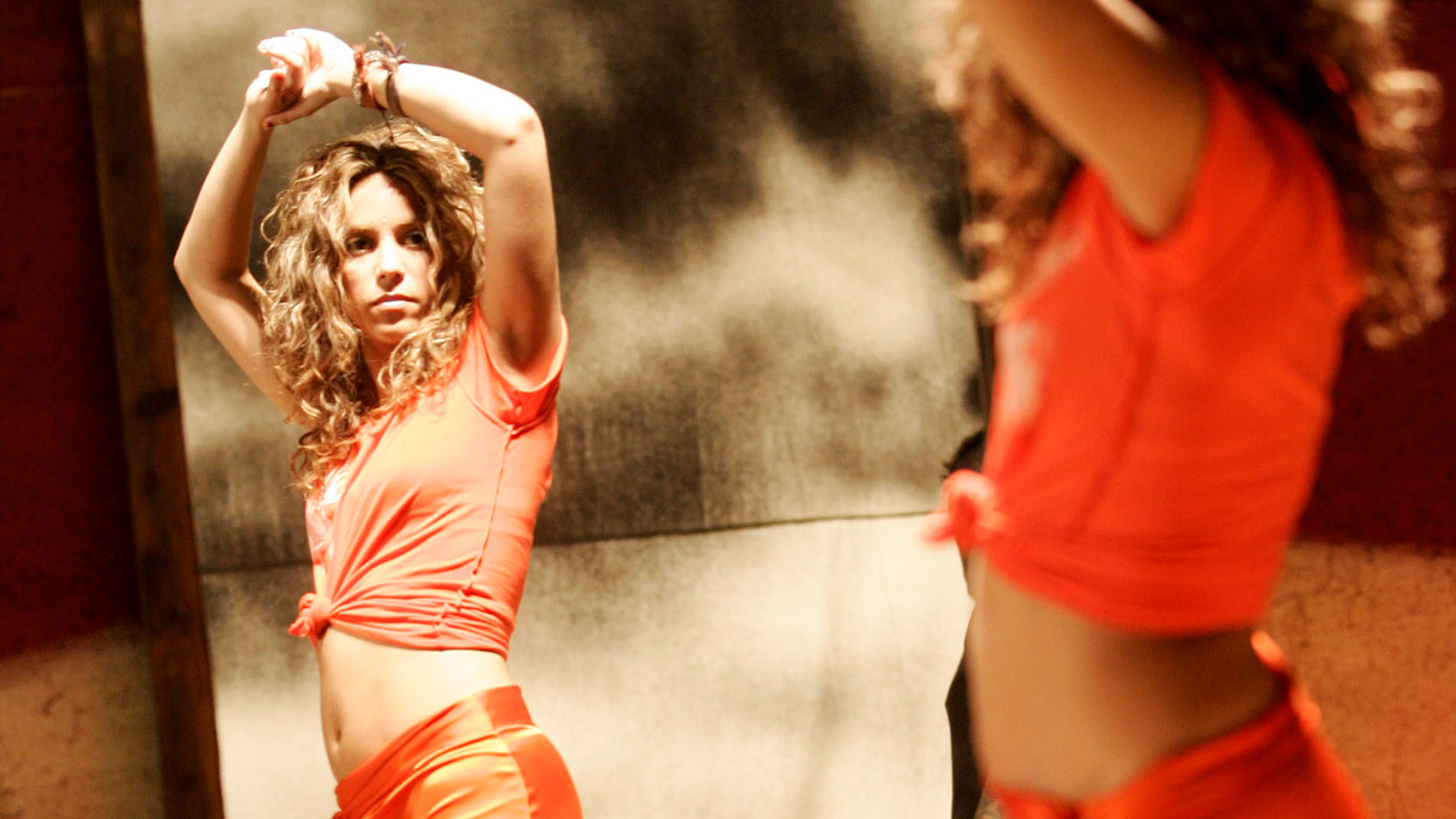 Shakira
Shakira
Image alt text: Shakira performing ‘Ojos Asi’, a global Latin pop dance anthem.
Global Latin Pop Dance Crossover: Shakira – ‘Ojos Asi (Thunder Mix)’ (1999)
Shakira’s “Ojos Asi (Thunder Mix)” represents a pivotal moment in global Latin pop. Producer Pablo Flores, a key figure in Latin pop’s rise, helped Shakira craft a song that honored her Lebanese roots while pushing sonic boundaries. The “Thunder Mix” extended remix amplified the track’s dance floor appeal, making it a global hit and foreshadowing the worldwide popularity of boundary-pushing Latin music.
Abstract Drum and Bass Danceability: Squarepusher – ‘My Red Hot Car’ (2001)
Squarepusher’s “My Red Hot Car” showcases Tom Jenkinson’s (Squarepusher) ability to blend experimentalism with danceability. Known for twisting drum and bass into complex, often undanceable forms, “My Red Hot Car” marked a shift towards spontaneity and groove. Despite its cut-up vocals and glitchy production, the track features a surprisingly funky bass line and a compelling groove, proving that even abstract electronic music can move a crowd.
Remix Launches Solo Career: Moloko – ‘Sing It Back (Boris Musical Mix)’ (1997)
Moloko’s “Sing It Back” initially flopped in its original downtempo form. However, the Boris Dlugosch remix transformed it into a house hit. Dlugosch’s remix, with its crisp house groove and Chic-inspired rhythm guitar, revitalized the song and launched Róisín Murphy’s successful solo career. This remix demonstrates the transformative power of a well-executed remix and its ability to redefine an artist’s trajectory.
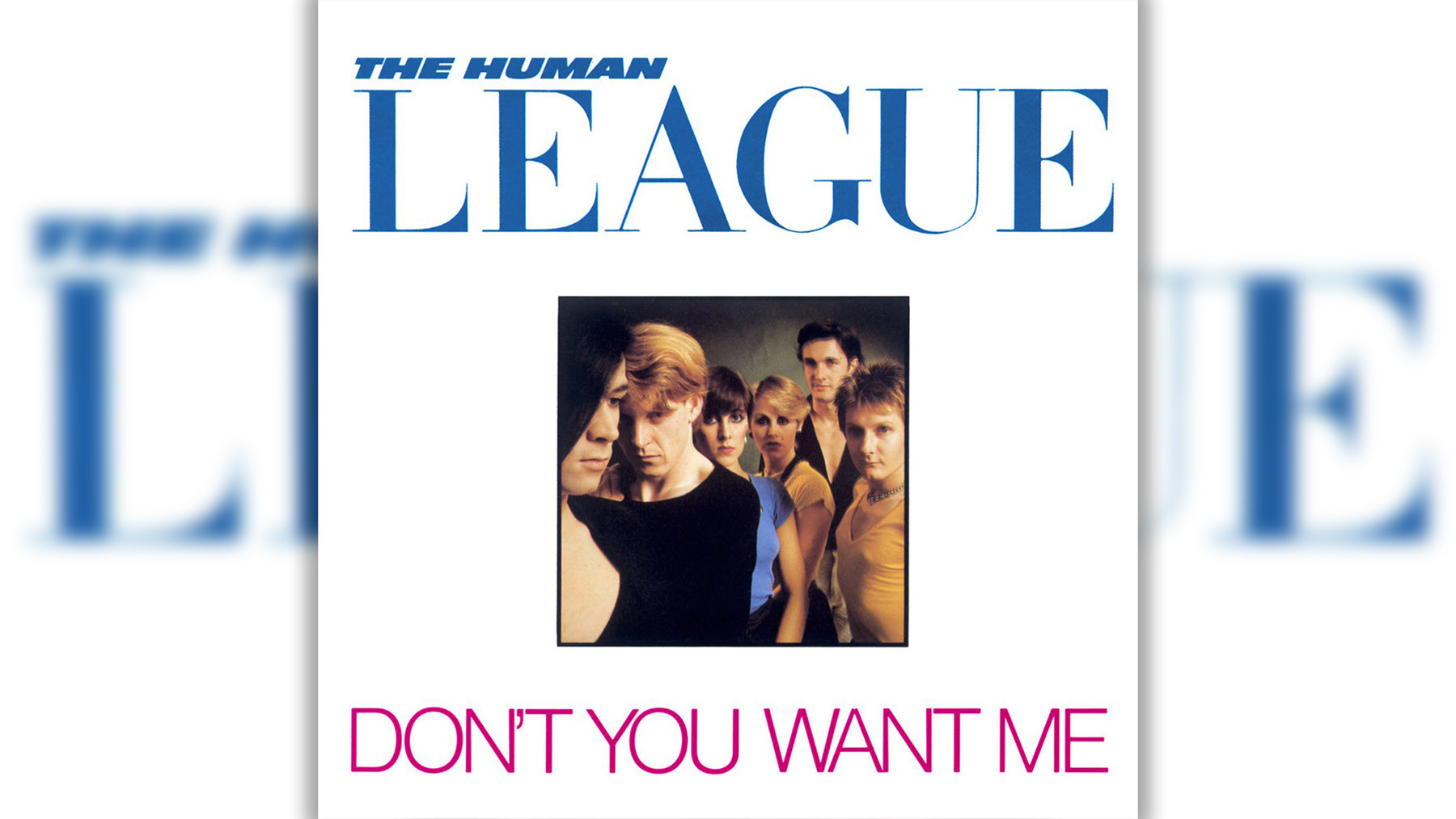 The Human League
The Human League
Image alt text: The Human League, synth-pop icons with the hit ‘Don’t You Want Me’.
Synth-Pop, Club, and Top 40 Merger: The Human League – ‘Don’t You Want Me’ (1981)
The Human League’s “Don’t You Want Me” was a key moment in the merger of UK synth-pop, club music, and mainstream pop. Initially underestimated by the band, the song’s he-said-she-said structure and catchy riff proved irresistible. “Don’t You Want Me” became a Number One hit in both the UK and US, demonstrating the growing crossover between electronic music and the pop mainstream in the early 80s.
Dance music is a constantly evolving tapestry of sounds, rhythms, and cultural influences. From its disco origins to the myriad subgenres of today, it continues to innovate and inspire. These songs represent just a glimpse into the vast and vibrant world of the best dance music of all time, a testament to its enduring power to move bodies and souls across generations. Explore these tracks, delve deeper into the genres they represent, and discover your own personal best dance music of all time. The dance floor awaits.

